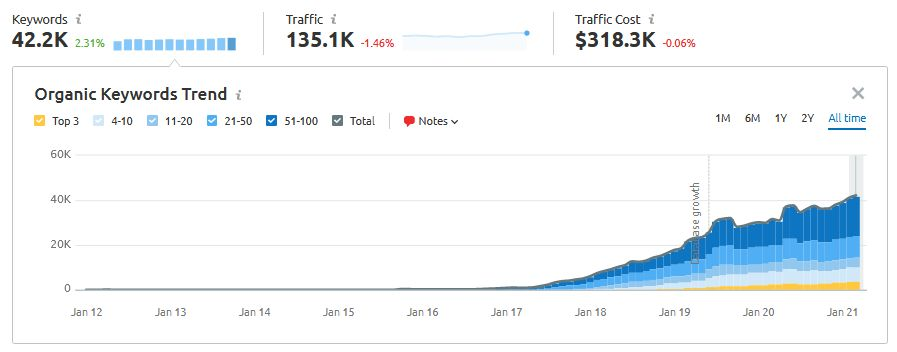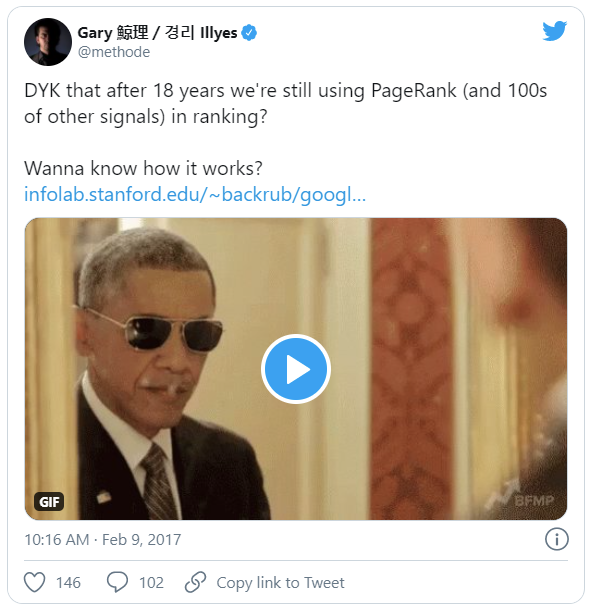In this industry, you will find many pervasive SEO myths. There are ridiculous myths that, even though they have been debunked over and over again, continue to be spread as if they are effective techniques.
In reality, these myths result in miscommunication, misconceptions and just plain wrong assumptions about certain SEO principles. They all need to be debunked on a regular basis, simply because too many people believe them.
Some of these myths can also lead to efforts that are counterproductive, leading to more work than what would be necessary otherwise.
SEO Myth #1: SEO Is Nothing but Snake Oil
SEO is definitely not snake oil. Practicing effective SEO requires following a set of methodologies that are time-tested and proven to work. Most SEO practitioners have a set of techniques they use that will help you see results, and many learn on their own from experts who are reliable sources in the industry. Others turn to conferences, self-paced learning and on-going knowledge updates to keep up with the changes occurring in the industry.
Many case studies prove that SEO works. From the perspectives of some, the fact that techniques used are mostly hidden can be a deterrent and makes this myth all the more pervasive. Some believe that when SEO pros don’t want to share what they are doing then they must be black hat (i.e. unscrupulous) or practicing SEO that doesn’t really work. The following includes data that shows how well SEO works:

This could not be further from the truth. SEO involves processes, tasks and measurable results that happen when those tasks are completed. If you’ve contracted an SEO pro to optimize your site, what matters is making sure that you hold them accountable for the completion of these tasks, the results they want to achieve and making sure that they can continue delivering on those results.
SEO Myth #2: Latent Semantic Indexing (LSI)
It’s not surprising that this myth continues to remain at the forefront of the industry. Many SEO pros claim that LSI exists and is used by Google. However, their mistake is that they use LSI to refer to keyword synonyms and the semantic use of keywords. It’s important to make a distinction between keyword synonyms, semantic keyword use, and LSI because all of them are entirely distinct from each other.
LSI, an acronym for Latent Semantic Indexing, is an extremely old technology that was developed in the 1980s. Today, Google has algorithms under the hood (such as BERT and SMITH) that consider the semantic relationships between words in a much more powerful way than LSI ever did. And most importantly, they’re finely-tuned to understand those relationships.
The mere existence of these powerful algorithms supersede any benefits that LSI would have ever had if Google did implement it in the first place anyway (which they did not).
Saying that something is LSI is akin to saying that keyword density impacts rankings (more on that later). It’s a ridiculous notion due to the context of LSI and the facts behind what LSI is and isn’t capable of.
Bill Slawski discusses LSI in his post here where he goes into more detail about the technology and why assumptions about Google using LSI are incorrect.
SEO Myth #3: There Is a Duplicate Content Penalty
There is no such thing as a duplicate content penalty. Instead, Google employs a filter of sorts. This filter helps to remove undesirable duplicate content from the SERPs, so that Google does not return too many repetitive results.
Google mentions in Google Search Central:
Despite the existence of this filter and the fact that it’s not a penalty, there are still some who believe that having duplicate content will result in an instant penalty. This is a mis-characterization at best and an outright lie at worst. It not only leads to more work than necessary to achieve the best possible optimization, but also leads to other misconceptions that become erroneously perpetuated by others throughout the industry.
This is why it’s important to ensure that you read all of Google’s own duplicate content guidelines to make sure that you are following what they would like to see and don’t inadvertently buy into myths.
SEO Myth #4: Keyword Density
Originating around 2003, this one is almost as old as SEO itself. Keyword density used to be about stuffing keywords into your content. Even though Google guidelines at the time were still about quality content, SEO practitioners took advantage of every loophole within the algorithms they could find. Some found that the more keywords they included, the more they could increase rankings. But many times, this would result in junk text written just for Google, without much regard for the user.
The danger of the approach of keyword density as it used to be known was the fact that most people would write for spiders, not for users. Nowadays, proper SEO is about quality, relevancy and how unforced your content appears. While Google says a lot of things, including “write naturally,” it’s still important to include targeted keywords in the content in the most natural way possible. Meeting readers’ needs should be the primary goal, while also taking into consideration SEO attributes.
There is still a sort of linear distribution of the main targeted keyword necessary in order to provide Google with “seeds” about your content, but you should not go overboard with repetition. Focus more on content quality rather than brute-force stuffing your articles with keywords.
It also depends on your competition. What are they doing? Becoming the “best fit” among your competitors can help you go farther than unquestioningly focusing on an outdated technique.
SEO Myth #5: You Can Optimize for RankBrain
This myth is repeated so often, and inaccurate information stated just as often, that people seem to think that you can optimize for Google’s RankBrain algorithm. The thing is, RankBrain is not something you can optimize for. While it may work in a few niche cases, there simply isn’t any proven method to optimize for RankBrain.
SEO Pro Kristine Schachinger explained the RankBrain myth recently in Search Engine Journal:
While you may be able to match intent and optimize for entities, doing so is not the same as optimizing for RankBrain. This is why it’s important to make sure that you’re not falling for an oft-repeated myth. When you do so, you’re muddying the waters for other SEO practitioners who may heed your recommendations, and they would be wasting their time by doing so.
SEO Myth #6: PageRank No Longer Matters
Any statement declaring the PageRank algorithm to be obsolete could not be further from the truth. PageRank, named after Google co-founder Larry Page, still matters greatly. Google just decided to hide it away and stop letting SEO pros see it through a convenient tool.
As Gary Illyes explained in a tweet, Google still uses PageRank internally:

Just because of the fact that Google pulled all of the data so that it’s internal only, people think that PageRank is a dirty word and you shouldn’t be talking about it anymore. In reality, you absolutely should be. PageRank is a calculation of a page’s value in Google’s eyes.
It’s just a bit more difficult to accurately identify exactly what Google is considering from a PageRank perspective nowadays.
If you want to learn more about the PageRank algorithm, take a look at the original Stanford paper on the topic.
SEO Myth #7: Links Are Not Important
Yes, we know, you probably heard from somewhere that links are not important. That “creating great content” is all you need. That “if you write it, Google will come.” Unfortunately, it doesn’t quite work that way, at least not for every query. The truth is, you need a combination of content, links and technical SEO in order to achieve the best results possible for the query you are targeting.
All that is to say, links are still important—just maybe not in the way you expect. If you create great enough content, the theory goes, then people will link to you automatically. Thus, you “should not” do any link building or attempt to manipulate links in any way.
But in reality, you still need to focus on obtaining links through content promotion and ensuring that Google will consider them to be natural links rather than spammy ones.
This is where content marketing and external promotion come into play: You can engage in these activities to improve your links with the ultimate goal of achieving higher rankings.
SEO Myth #8: Content is the Only Thing That Matters
As we touched on above, there are some who believe that content is the only thing that matters in order to rank. While in some cases, such as when the targeted queries have very low competition, that may be possible. For most moderately and heavily competitive queries, though, you need a combination of content, links and technical SEO to achieve optimal rankings. The exact combination depends on your competitor research and the data it reveals.
It’s a balanced synergy that is required in order to make your site as competitive as possible so that you can rise in the rankings. Factors like the topics you write about, the quality of your content, the organization of your site structure, the internal links that you create, the inbound external links you gain, how your content is laid out and many others contribute to the results you’re able to get.
Unfortunately, this myth continues to be perpetuated by those who don’t know any better or are a copywriting company trying to sell you something.
Of course, content is not the only thing that matters. Many other factors work together to create a site that can outrank others in a highly competitive niche.
SEO Myth #9: Microsites Will Help My SEO
Several years ago, microsites were all the rage. They were an optimization point because site owners believed that the pure link value from those sites on empty domains was enough to achieve higher rankings.
The reality is, microsites will seldom help sites in competitive niches unless the domain itself has some type of history and backlink profiles built up already. Those are the factors that are key to achieving at least some results with microsites.
But don’t expect a microsite that’s built on a blank domain to help your site in a competitive niche. Instead, be sure to do your due diligence on an expired domain to ensure that it has enough performance metrics (not to mention a quality link profile) already built-in to guarantee that it really will help your site improve.
SEO Myth #10: SEO Is a One-Time Effort
We are not sure when this one got started, but this is likely as old as SEO itself: The myth that SEO is a one-time effort. You optimize your homepage, sprinkle some keywords around and boom—your site is done. Sadly, that’s not the case. Because SEO includes many components and not just one or two, you must continue to do SEO on an ongoing basis if you want to see results.
For example, you wouldn’t build one link to your site and call it a day, right? In the same fashion, creating one piece of high-quality content won’t get the job done, either. SEO requires a consistent stream of links, content and technical SEO efforts in order to achieve superb and lasting results. This is why you must always be working on your website, and why SEO is always in a state of flux.
Don’t think that just because someone got lucky with some SEO they did a while back on their one-page site that the same will be true for you—that’s seldom the case and is rarely repeatable. E-commerce stores will need ongoing SEO to make sure that they have enough clients to support their stores. News blogs need steady streams of content to keep their news fresh and in the eyes (and ears) of potential customers. Law firm websites need steady streams of content to keep their sites engaging and driving traffic who will eventually convert.
All that is to say, an SEO practitioner’s work never ends, and every website needs long-term SEO efforts in order to succeed.
Don’t Let SEO Myths Work against You
If you don’t know the difference between myths and reality, how do you know that your SEO is effective? On the other hand, if you don’t know which SEO techniques do and don’t work, then you may be stuck between a rock and a hard place without even knowing it.
SEO is not as simple as using a few techniques. While it is true that some could help you, if you don’t know what you are doing then you may accidentally end up working against yourself. To avoid this, vet the industry influencers you are following and make sure they know their stuff. Also be sure to heed the advice of search engines themselves rather than relying on influencers alone.
You can use our myths checklist to keep your own list going. By doing this, you won’t fall into the trap of falling for myths that are as old as SEO itself.
Image credits
Screenshot by author / March 2021








